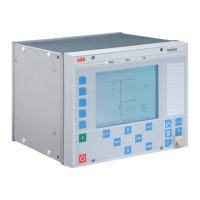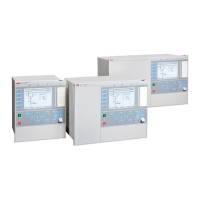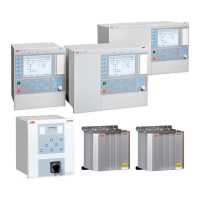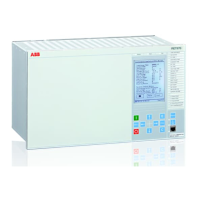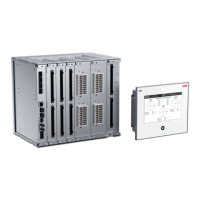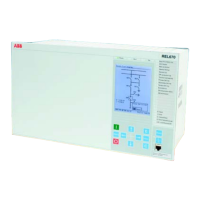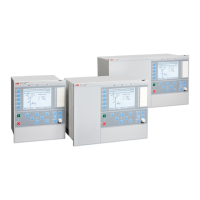the IED. The failures are detected by the
negative-sequence based algorithm or by the
delta voltage and delta current algorithm.
Upon the detection of a failure the fuse
failure supervision function activates an alarm
and blocks voltage-dependent protection
functions from unintended operation.
14. Current circuit
supervision
Current circuit supervision is used for
detecting faults in the current transformer
secondary circuits. On detecting of a fault the
current circuit supervision function can also
activate an alarm LED and block certain
protection functions to avoid unintended
operation. The current circuit supervision
function calculates the sum of the phase
currents and compares the sum with the
measured single reference current from a
core balance current transformer or from
another set of phase current transformers.
15. Access control
To protect the IED from unauthorized access
and to maintain information integrity, the IED
is provided with an authentication system
including user management. Using the IED
User Management tool in the Protection and
Control IED Manager PCM600, an individual
password is assigned to each user by the
administrator. Further, the user name is
associated to one or more of the four
available user groups: System Operator,
Protection Engineer, Design Engineer and
User Administrator. The user group
association for each individual user enables
the use of the IED according to the profile of
the user group.
16.
Inputs and outputs
The IED is equipped with three phase-current
inputs and two residual-current inputs for
earth-fault protection. The IED always
includes one residual voltage input for
directional earth-fault protection or residual
voltage protection. Further, the IED includes
three phase-voltage inputs for overvoltage,
undervoltage and directional overcurrent
protection and other voltage based protection
functions.
The phase-current inputs are rated 1/5 A. The
IED is equipped with two alternative residual-
current inputs, that is 1/5 A or 0.1/0.5 A. The
0.1/0.5 A input is normally used in
applications requiring sensitive earth-fault
protection and featuring a core-balance
current transformer.
The three phase-voltage inputs, for either
phase-to-phase voltages or phase-to-earth
voltages, and the residual-voltage input cover
the rated voltages 100 V, 110 V, 115 V and
120 V. The rated values of the current and
voltage inputs are selected in the IED software.
In addition, the binary input thresholds are
selected by adjusting the IED’s parameter
settings. The threshold voltage can be set
separately for each binary input.
There is also an optional RTD/mA module
with 8 RTD/mA inputs and 4 mA outputs.
The optional RTD/mA module facilitates the
measurement of up to eight analog signals
via the RTD or mA inputs and provides four
mA outputs. The RTD and mA inputs can for
instance be used for temperature
measurement of motor bearings and stator
windings, thus extending the functionality of
the thermal overload protection and
preventing premature aging of the motor
windings. Furthermore, the RTD and mA
inputs can be used for measuring the ambient
air or cooling media temperature. The RTD
and mA inputs can be used for supervision of
analog mA signals provided by external
transducers. The RTD/mA inputs can be
alternatively used also as resistance input or
Motor Protection and Control 1MRS756977 D
REM630
Product version: 1.1 Issued: 2011-05-18
ABB 13
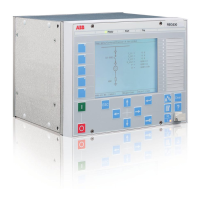
